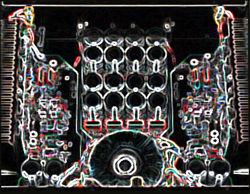
Class-B amplifiers are inherently problematic when driving the load close to zero output.
When the output is close to zero, there is uncertainty concerning which transistor drives the load because there is no way to perfectly transfer control from one output device to the other.
This is operation on the fringes, and creates “zero crossing distortion”.
It’s why purely Class-B is not used for audio power amplifiers. In addition, the efficiency is relatively low (theoretically 78 percent) at maximum power out.
With Class-A, there is significant current flowing through both transistors because the bias current is at least as great as the maximum output current. In “pure Class-A” both transistors are driving current all the time, regardless of the output.
Class-A controls the load better than Class-B, and generally, Class-A is considered to offer the highest performance and best sound. There are various “levels” of Class-A operation, depending on the amount of current through the transistors at idle (zero output).
A “pure Class-A” amplifier is actually not the least efficient (50 percent at maximum power) that this topology has to offer. In “heavy-bias Class-A,” the transistors are driving each other as well as the load, and the amount of “extra current” dedicated to this lowers efficiency below 50 percent. Why would anyone design an amplifier with “heavy bias”? Simply, better control over the load, especially when the load is reactive.
Class-A topologies that are biased with less current than is required to be classified as “pure Class-A” are called Class-AB. They are a cross between Class-B operation and Class-A operation because the transistors both conduct through the zero crossing point. Class-AB can be “biased heavily” to produce a near-Class-A effect, while the efficiency of Class-AB into reactive loads depends on biasing. Heavier bias currents allow better control, but as mentioned, present an efficiency penalty.
The majority of amplifiers produced today are Class-AB, with efficiency at maximum power varies between 50 percent and 78 percent, depending on the strength of the bias current. This class is very mature in audio, and therefore inherently low cost.
